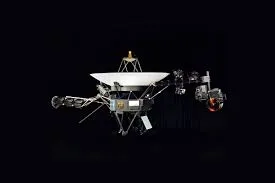Resuming communication, NASA’s Voyager 1 spacecraft has returned useful data for the first time since November 2023, which is encouraging news for deep-space research. With the probe, humanity’s furthest envoy, continuing to function normally but just not returning any significant information, a five-month hush that had engineers scratching their heads has come to an end.
One of the pioneers of space travel, Voyager 1 was launched in 1977. We saw previously unseen views of Jupiter, Saturn, and their moons as it passed by, giving us an intriguing look at their rings and atmospheric aspects. Passing over the heliopause—the zone separating interstellar space from the Sun’s influence—was a great accomplishment for Voyager 1 in 2012. As of right now, it is more over 15 billion miles from Earth, which makes communication difficult. A signal needs 20 hours and 36 minutes to travel one way.
When the spaceship began broadcasting what NASA called “gibberish patterns of code” in November, the data quiet was declared. Voyager 1 was transmitting back unintelligible science and engineering data, even though it was still responding to commands from Earth. This spurred a committed group of engineers from NASA’s Jet Propulsion Laboratory (JPL) to start working remotely to diagnose and resolve the problem for several months.
It was discovered that a defect in the Flight Data Subsystem (FDS), one of Voyager 1’s onboard computer chips, was the cause. Prior to being transmitted back to Earth, the data gathered by the spacecraft’s instruments must be formatted and packaged by the FDS. By using “inventive sleuthing,” as the JPL team put it, they came up with a solution: a series of tiny code changes that were communicated via radio signal across the enormous chasm of interstellar space.
Voyager 1 started transmitting useful data on its health and status in April 2024 after the successful fix. Engineers will be able to evaluate the spacecraft’s overall health and operational capabilities thanks to this important milestone. Getting the research equipment back online and enabling Voyager 1 to continue its historic mission of returning priceless data on the interstellar medium will be the next challenge.
The engineers’ creativity in designing and constructing Voyager 1 is demonstrated by the fact that it is still operational after 46 years in orbit. Maintaining a spacecraft at this distance is an enormous task, and the difficulties grow as the probe goes farther into interstellar space. NASA’s dedication to keeping in touch with this amazing explorer and its continuous goal of scientific discovery is demonstrated by the team’s achievement in resolving the most recent data problem.
In addition to offering insightful information about the interstellar environment, the data Voyager 1 returns acts as a beacon of human achievement. It serves as a reminder of our ability to study the universe and evidence of the ongoing value of human curiosity. We can all experience the thrill of exploration and wonder at what mysteries the interstellar emptiness may possibly conceal as Voyager 1 continues its incredible journey.



